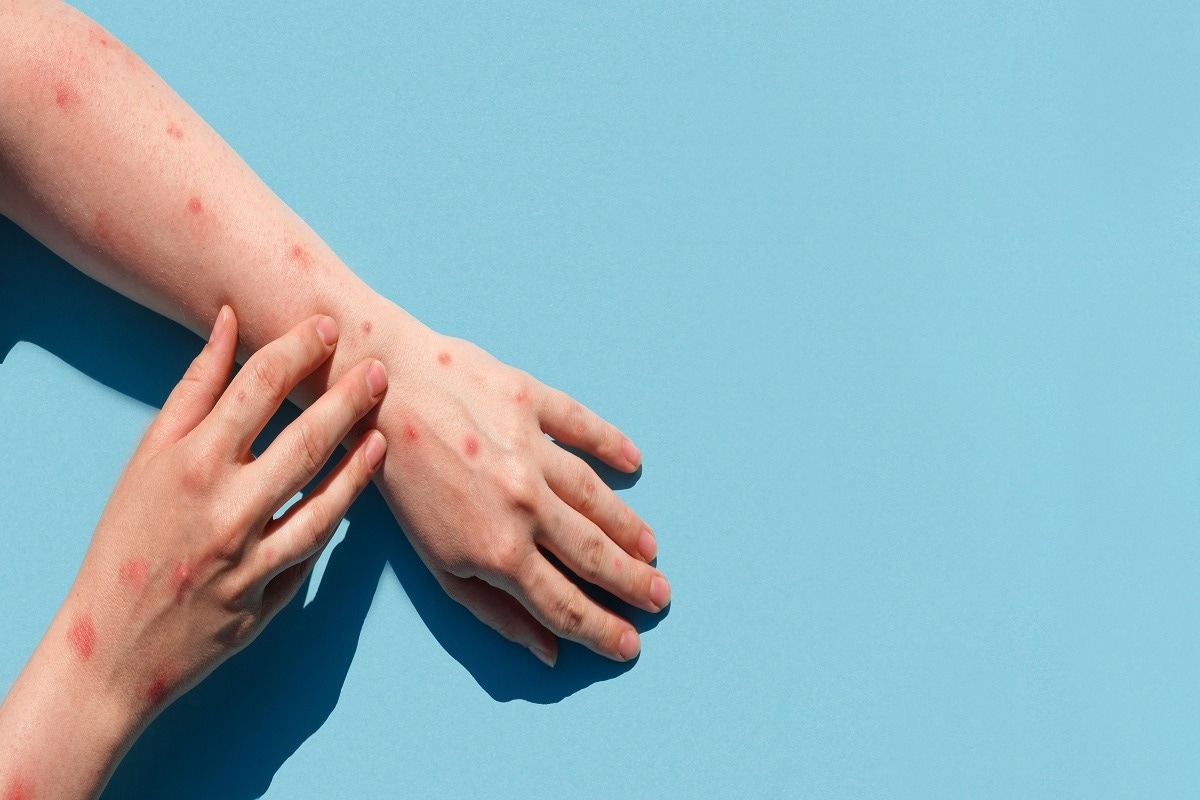In a recent study published in the Eurosurveillance journal, researchers explored the relevance of different clinical samples in monkeypox diagnosis.
 Study: The relevance of multiple clinical specimens in the diagnosis of monkeypox virus, Spain, June 2022. Image Credit: Marina Demidiuk/Shutterstock
Study: The relevance of multiple clinical specimens in the diagnosis of monkeypox virus, Spain, June 2022. Image Credit: Marina Demidiuk/Shutterstock
Recent studies have reported that the monkeypox virus (MPXV) manifests through viral inoculation into the skin or mucosal surfaces via close physical contact. Most of the cases reported have been among males who have sex with males, suggesting the possibility of an increase in the number of infections because of close physical contact. So far, skin swabs obtained from either ulcers, crusted lesions, or vesicles have been the standard samples employed for MPXV detection. However, extensive research is required to understand the specific role played by different specimens in viral detection.
About the study
In the present study, researchers assessed the distribution of MPXV across distinct clinical samples collected from patients suspected to be infected with MPXV.
The team collected clinical and demographic data from electronic medical records as well as prospective clinical questionnaires answered by a group of patients having suspected MPXV infection between 27 May and 24 June 2022. The samples were collected systematically from plasma specimens to skin lesions. Additionally, oropharyngeal and anal swabs, depending on the type of sexual activity reported or the symptoms reported by the patient.
After the samples were collected, they were preserved in a viral transport medium. Samples from the same patient were analyzed simultaneously immediately after collection. Molecular analyses were performed using real-time polymerase chain reaction (PCR) to detect MPXV.
Results
A total of 140 clinical specimens with corresponding quantification cycle (Cq) values were obtained throughout the study period from 37 patients. The patient cohort included males who had sex with males with a median age of 31 years. The specimens collected included 37 plasma samples, 37 skin lesion samples, 32 anal swabs, and 34 oropharyngeal swabs. As per the symptoms recorded during sample collection, seven patients had anal lesions and proctitis, and four had oropharyngeal lesions and sore throat.
Among the 140 samples collected, ten tested negative for MPXV, including one skin lesion, two anal, three plasma, and four oropharyngeal samples. The team noted that the duration of days between sampling and symptom onset was between one to 15 days. Notably, one of the patients displayed MPXV-negative skin lesions but tested positive for the presence of MPXV on anal, plasma, and oropharyngeal samples with Cq values of 33, 36, and 25 on the fifth day after symptom onset, respectively. Furthermore, seven of the total 34 oropharyngeal samples collected were from patients who reported the appearance of vesicular lesions, while 10 of the 32 anal swabs collected were from those who reported anal lesions.
Furthermore, the team found a 97% positivity rate and high viral loads with Cq values ranging between 14 and 33 among skin lesion samples collected from any part of a patient’s body. On the other hand, plasma samples had a 91.9% positivity rate with viral loads with Cq values ranging between 28 and 40. There was no statistically significant correlation between symptoms and Cq values corresponding to plasma samples. Moreover, the positivity rates associated with the rest of the samples were 88% for oropharyngeal swabs with Cq values between 19 and 37 and 94% for anal swabs with Cq values between 14 and 37.
Conclusion
The study findings showed that skin lesions present by MPXV patients had the highest viral load and positivity rate.
Additionally, most of the plasma samples analyzed tested MPXV positive, indicating that at the time of sample collection, the patients were viraemic. The Cq values observed showed low viral loads, which suggested that these patients were positive for MPXV before the skin lesions appeared. Therefore, the researchers propose that analyzing plasma samples of individuals who were in close contact with suspected MPXV patients and had no skin lesions could facilitate the early detection and control of MPXV transmission.
Journal reference:
- Veintimilla Cristina, Catalán Pilar, Alonso Roberto, de Viedma Darío García, Pérez-Lago Laura, Palomo María, Cobos Alejandro, Aldamiz-Echevarria Teresa, Muñoz Patricia. (2022). The relevance of multiple clinical specimens in the diagnosis of monkeypox virus, Spain, June 2022. Eurosurveillance. doi: https://doi.org/10.2807/1560-7917.ES.2022.27.33.2200598 https://www.eurosurveillance.org/content/10.2807/1560-7917.ES.2022.27.33.2200598